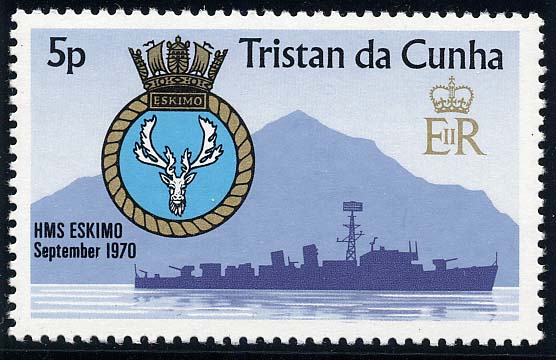Built as a frigate under yard No 2001 by Samuel J. White at Cowes, Island of Wight for the British Royal Navy.
22 October 1958 laid down.
20 March 1960 launched under the name HMS ESKIMO (F119). One of the Tribal class.
Displacement 2,300 tons standard, 2,700 tons full load, dim. 109.7 x 12.9 x 5.3m.
Powered by COSAG a combined steam and gas turbine. A single Metrovick steam turbine, powered by a Babcock & Wilcox Y 100 boiler and a G6 Metrovick gas turbine. Where both connected to a single gearbox, driving a single shaft, 12,500 shp + 7,500 shp. The steam turbine is used for normal cruising while the gas turbine was used for sustained bursts of high speed or when it was necessary to get underway quickly without waiting for steam to be raised. When both machines were running, speeds of 28 knots could be attained.
Range 4,500 miles by a speed of 12 knots. Bunker capacity 400 tons.
Armament 2 – double 4.5 inch, 2 – 40mm. guns. Anti submarine armament 1 Limbo Mk 10, one Wasp helicopter.
Crew 253.
21 February 1963 commissioned.
The Tribal class was designed to work in all climates, but special for the Far East, West Indies and the Persian Gulf. The class was fitted out with air-condition.
The ESKIMO after commissioned was in service at the Middle East and home waters. During the subsequent commissions the ESKIMO has visited many parts of the world and seen service in the Mediterranean, the Far East, The West Indies and the Middle East.
She visited Tristan da Cunha in September 1970.
In July 1971 the ship entered a long refit and extensive modernisation programme at Chatham. During this refit her main armament was increased with the addition of two Seacat missile systems. Also the accommodation space was improved.
1973 Recommissioned, and after a workup period out of Portsmouth she sat sail for the West Indies in the spring of 1974.
Was refitted and thereafter she entered the Standby Squadron at Chatham in August 1979.
August 1981 placed on the disposal list.
.
During the Falkland War in 1982 she was cannibalised for spare parts for other ships of the Tribal class.
Used as a target vessel by the Research Establishment at Aberport.
16 January 1986 she was towed from Portsmouth for use as a target.
14 May 1992 ESKIMO towed from Pembroke by the tug ARDNEIL and arrived at Bilbao, Spain on 19 May 1992 to be scrapped by Demolition Naval del Norte S.A.
Source: Marine News.
http://www.btinternet.com/~warship/Post ... tribal.htm
